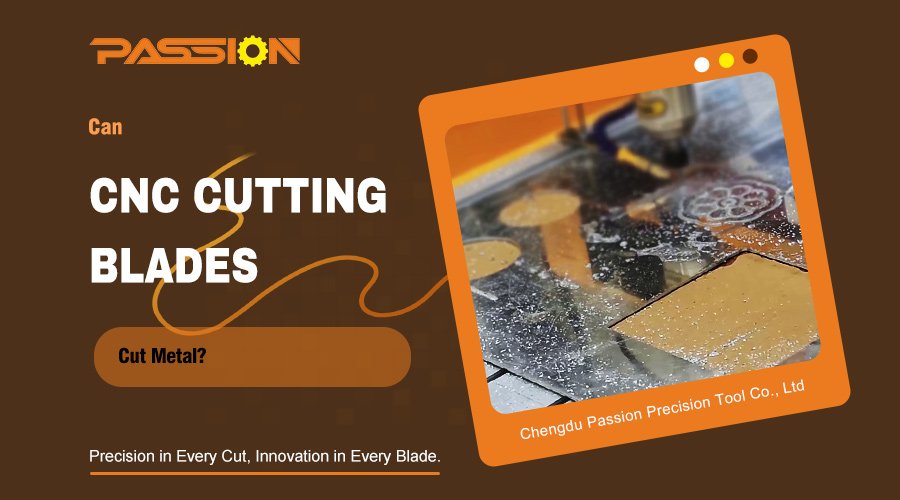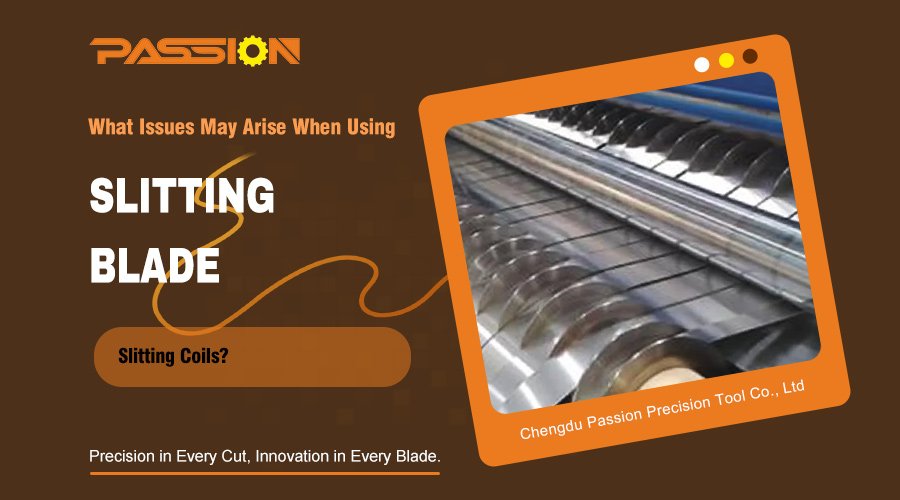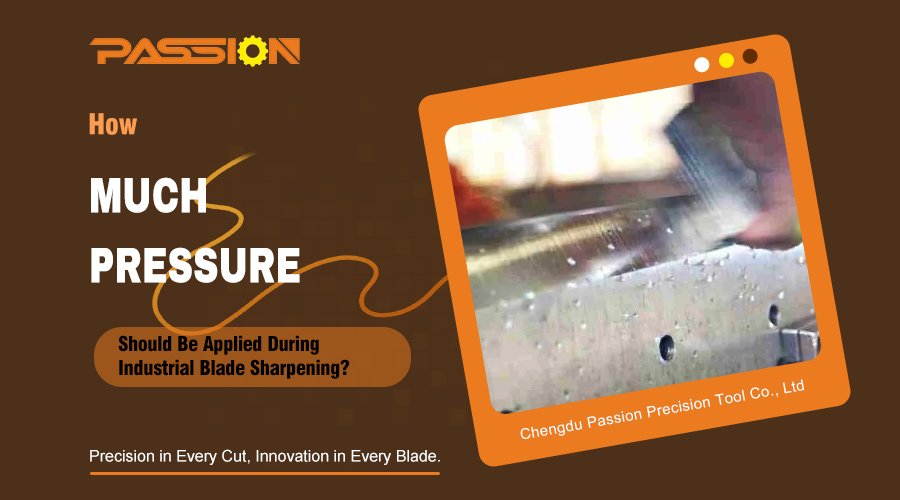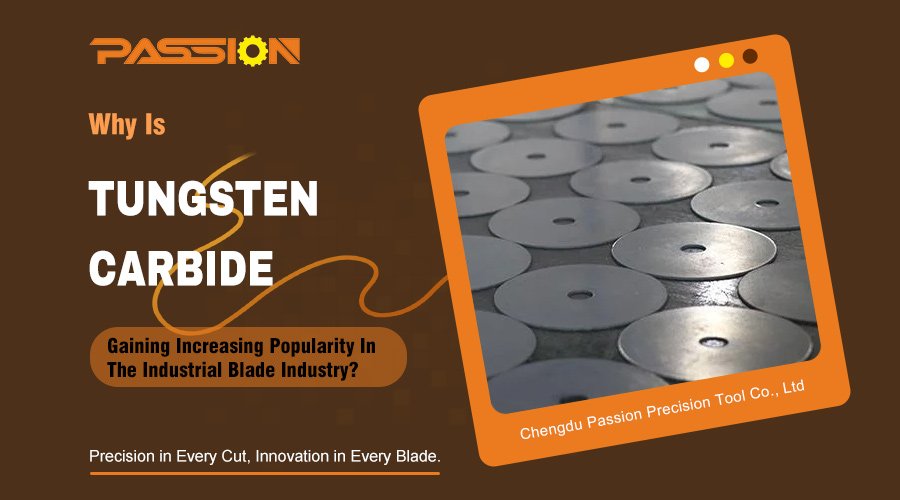In the chemical fiber industry, blade cutting efficiency is affected by several key factors, including blade material and performance, blade geometry and kerf design, fiber type and composition, cutting process parameters, equipment status and adjustments, blade maintenance and sharpening, and the operating environment, each of which affects the performance and life of the cutting tool. These important factors are introduced below:
Blade Material And Performance
Hardness: The hardness of the blade is critical to maintaining sharpness and cutting efficiency. Chemical fiber blades are typically made from materials such as high carbon steel, tungsten steel or special alloys that provide greater hardness and durability.
Wear Resistance: Chemical fiber materials are generally tougher, and blades need to have better wear resistance to keep the cutting edge stable and extend the life of the blade.
Heat Resistance: The cutting process generates heat, and the heat resistance of the blade material determines whether it can continue to maintain cutting performance and structural stability at high temperatures.
Blade Geometry And Kerf Design
Cutting Edge: A sharp cutting edge ensures smooth and efficient fiber cutting, while a dull cutting edge may lead to fiber deformation, breakage or uneven cutting, reducing efficiency.
Cutting Angle: The angle at which the blade cuts the chemical fiber has a direct impact on the smoothness and efficiency of the cut. Optimizing the cutting angle reduces friction, prevents excessive heat buildup, and maintains the sharpness of the blade.
Blade Coating: Some blades are coated with metal coatings, such as titanium or diamond coatings, which reduces friction and improves wear resistance and cutting efficiency.
Blade Thickness And Width: The thickness and width of the blade need to be reasonably selected according to the type of chemical fiber and cutting requirements. A blade that is too thick will increase cutting resistance and reduce efficiency, while a blade that is too thin may affect its strength and stability.
Fiber Type And Composition
Fiber Diameter: The thickness of the fiber directly affects the cutting difficulty of the blade. Coarser fibers may require tougher, more durable blades to maintain cutting efficiency.
Fiber Material: Chemical fiber materials, such as polyester and nylon, have different hardness and flexibility than natural fibers, and the design of the blade needs to be compatible with the chemical fiber material being cut.
Fiber Coating: Some chemical fiber surfaces have coatings or special treatments that may increase blade wear or affect the cutting quality, so you need to use the right blade for different coated materials.
Fiber Moisture Content: The moisture content of fibers affects their softness and cutting performance. Excessive moisture content can cause fibers to stick, increasing cutting resistance and reducing efficiency.
Additives And Impurities: Additives or impurities in the fiber may have a corrosive or abrasive effect on the blade, affecting the cutting efficiency. Therefore, it is necessary to control the quality of raw materials to reduce the content of impurities.
Blending Ratio: If the blending ratio is reasonable, the physical properties of the fibers complement each other, the cutting resistance is smaller, the blade wear uniformity, cutting efficiency is higher. If the proportion of a fiber is too high (such as hard fibers accounted for a large proportion), the cutting resistance increases, blade wear increases, cutting efficiency decreased significantly. Therefore, it is necessary to optimize the blending ratio according to the physical properties of the fibers and the cutting needs, to avoid a high proportion of one type of fiber.
Cutting Process Parameters
Cutting Speed: Cutting speed directly affects production efficiency, but too high a speed may lead to blade overheating, increased wear or fiber breakage. Therefore, it is necessary to choose the appropriate cutting speed according to the blade performance and chemical fiber characteristics. For example, when the auxiliary air pressure is insufficient, the melt can not be blown in time, you need to adjust the air pressure to a reasonable range (usually 0.8mm nozzle distance).
Feed Rate: Feed rate is the depth to which the blade cuts into the fiber with each cut. A proper feed rate balances cutting efficiency and blade life to avoid overloading the blade with too much feed or reducing efficiency with too little. Excessive feed rates can overload the blade and cause premature wear.
Cutting Angle: The cutting angle affects the fiber force state and cutting quality. Appropriate cutting angle can reduce fiber deformation and fracture, improve cutting efficiency.
Cutting Clearance: The gap between the movable and fixed knives (cutting clearance) has a significant effect on tool life. Within a certain range, a large cutting clearance requires a small cutting force; conversely, the cutting force is large and the tool wear is large. When the gap tends to zero, the cutting force will become quite large, until the strength of the edge can not withstand and fracture phenomenon.
Auxiliary Gas: Oxygen can oxidize the metal surface to improve the cutting efficiency, but the gas pressure is too high will produce eddy current, need to be dynamically adjusted according to the thickness of the material.
Equipment Status And Adjustment
Precision Of Equipment: The precision of cutting equipment directly affects the installation position of the blade and cutting trajectory. High-precision equipment can ensure the accurate alignment of the blade and fiber, reduce cutting errors and improve efficiency.
Blade Installation And Adjustment: The quality of blade installation is critical to its cutting performance. Correct installation and adjustment ensures blade stability and cutting accuracy, and avoids vibration or deflection caused by improper installation.
Equipment Maintenance: Regular equipment maintenance keeps the cutting system in good condition, reduces downtime and improves productivity. For example, cleaning fiber residue from the blade surface, checking blade wear, etc.
Blade Maintenance And Sharpening
Regular Maintenance: Regular inspection and cleaning of the blade to ensure that it is free of accumulated dirt and debris will help maintain its good cutting performance.
Blade Edge Treatment: After normal grinding and processing of the blade, there are many small spikes on the edge, these spikes are sharp but fragile and easy to break. Before use, the small spikes must be carefully processed to reduce the local stress concentration, thereby improving the impact strength and extending the service life of the blade.
Sharpening And Trimming: With the growth of the use of time, the blade may become blunt, regular sharpening and trimming is the key to maintain the cutting effect.
Re-Sharpening Times: The number of times the cutting edge of the cut-off blade is an important indicator to measure the service life of the cut-off blade. Even if the quality of the blade is the same, the number of times it is resharpened and the way it is used will lead to differences in actual service life.
Operating Environment
Cooling Systems: Blades can suffer thermal fatigue due to high temperatures during the cutting process, so the use of a cooling system (e.g., air or liquid cooling) can effectively reduce temperatures and minimize blade wear.
Lubrication: Good lubrication can effectively reduce the friction between the blade blade and the fibers, reducing the wear of the blade. If there is no timely and effective lubrication of the blade in the cutting process, the friction coefficient of the blade blade and the blade body will increase, and the heat generated will also increase, resulting in faster blade wear.
The Role Of Demineralized Water: Demineralized water can cool the material conveyed by the casting belt in the process of cutting granules, which also has a certain effect on the use of knives. It can take away the heat generated in cutting in time, reduce the speed of tool wear, but also play a certain lubricating effect. However, excessive demineralized water has a hindering effect on the operation and slicing of knives, which will lead to noise, cut consumption increase, while demineralized water will also enter the mechanical transmission part.
Changes In Production Loads: Changes in production loads can lead to changes in cutting conditions. For example, an increase in the production of slices, a consequent increase in the amount of titanium dioxide, and an increase in the cutting speed and frictional heat generated will shorten the life of the tool. The life of a slicer tool operating at low load is considerably longer than when operating at full load.








